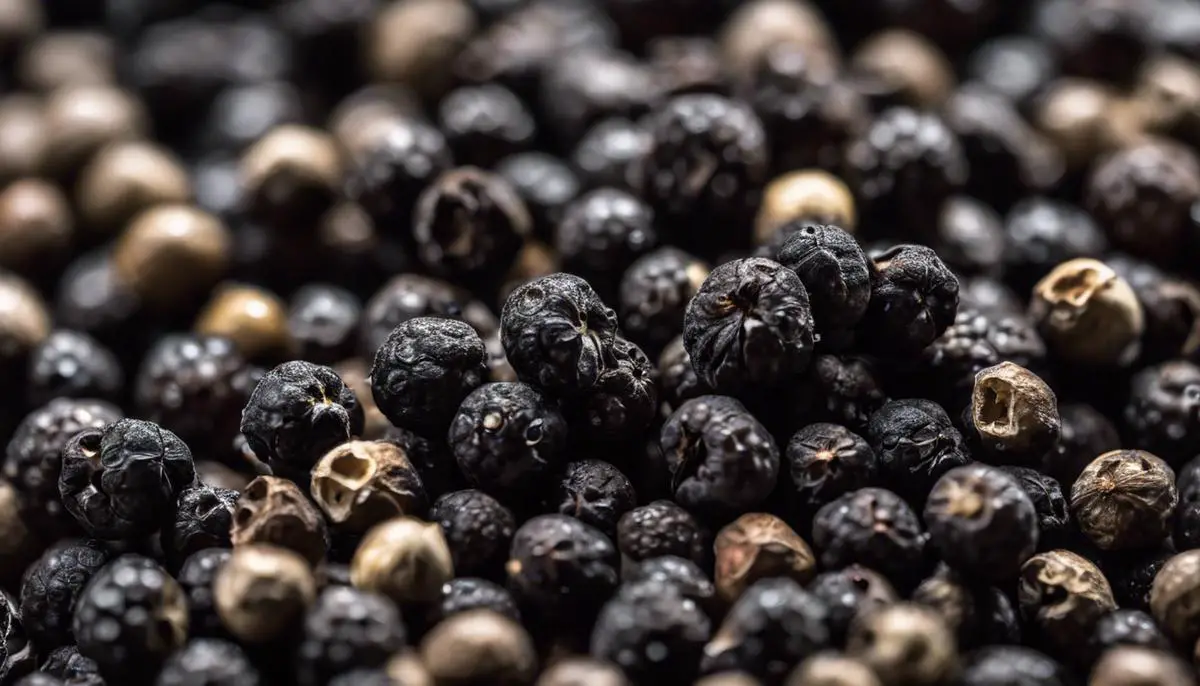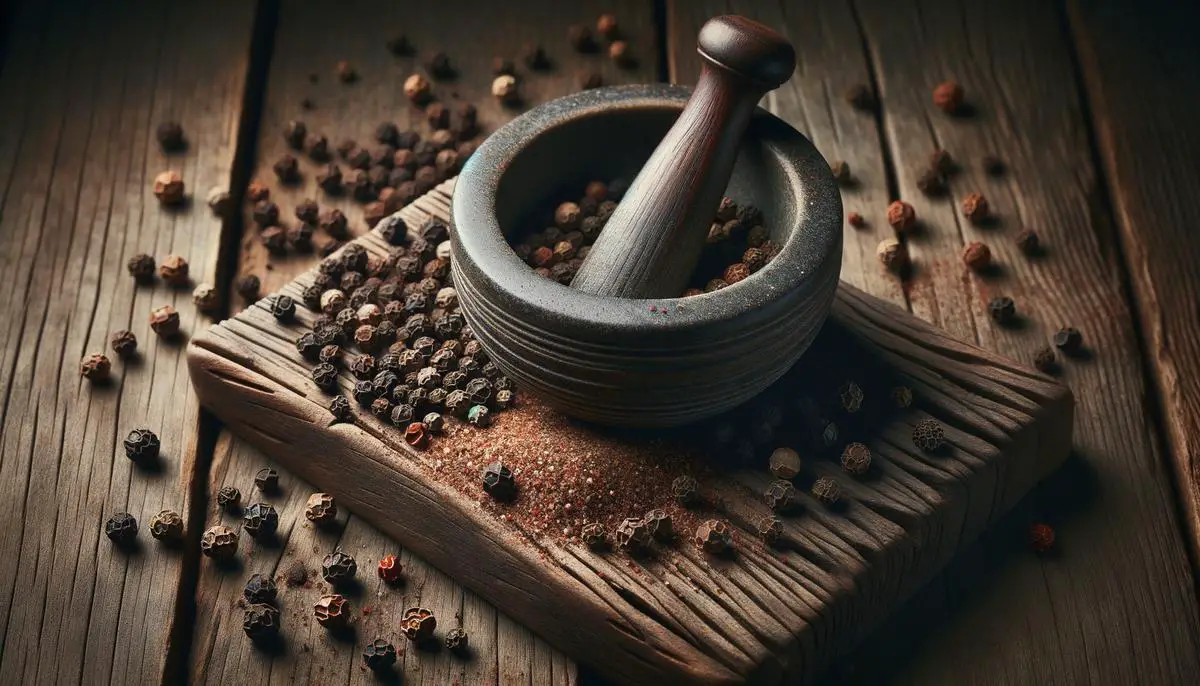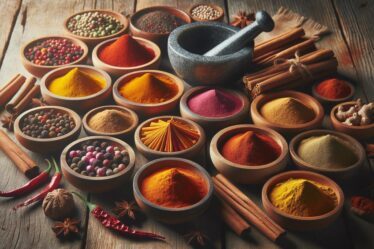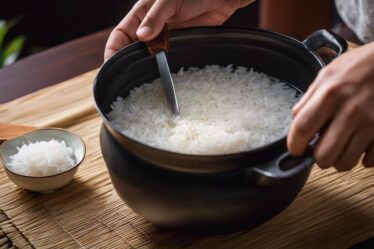
History of Peppercorns
Peppercorns have been spicing up human life for thousands of years, with historians agreeing that these potent spheres of flavor were well-known over 4,000 years ago in South Asia, particularly on the Malabar Coast of India. From here, pepper vines began their global journey.
Ancient trade routes played a pivotal role in peppercorn migration. They were so valued that they acted almost like currency. By the time of the ancient Greeks and Romans, pepper was a symbol of high society – a luxury item that only the wealthy could afford.
The Romans documented their love for pepper in recipes and medical texts, showing the extensive use and the varieties they cherished. The fall of Rome could have been a dark time for pepper, but it persevered, cementing its place in the gastronomic traditions of Europe.
In the Middle Ages, peppercorns significantly influenced economic and political landscapes. European demand for this exotic spice led to the age of exploration, with explorers like Vasco da Gama seeking direct access to the source of peppercorns. His voyage around the Cape of Good Hope to the pepper shores of Kerala marked a new era in the spice trade, making pepper more accessible.
In the East, the story of pepper intertwines with the tales of the Silk Roads – an intricate network of trade routes that enlivened ancient economies. China included pepper in their treasury of medicinal herbs, using it to treat various ailments.
The significance of peppercorns also extended beyond trade and cuisine, becoming embedded in ceremonial practices and medieval folklore. As continents connected and cultures blended, peppercorns found their way into nearly every cuisine around the globe, transitioning from an exclusive luxury to an everyday essential.
Today, peppercorns continue to reign supreme in the culinary world – an ancient spice that has stood the test of time, traveling from prehistoric trade routes to modern kitchens, proving it’s more than just a seasoning. It’s a taste of history, anchoring our meals in a tradition as old as civilization itself.
Types and Flavors of Peppercorns
The peppercorn family offers a spectrum of flavors that go beyond the iconic black pepper. Each variety has its unique personality, capable of transforming a simple meal into a complex masterpiece.
Black peppercorns, cultivated from the unripe berries of the Piper nigrum vine, deliver a robust, piquant flavor with just the right amount of heat. They are revered for their versatility in kitchens around the globe.
White peppercorns, from the same vine but with the outer skin removed, have a milder flavor with less complexity. They lend themselves beautifully to creamy sauces and lighter dishes, offering a sneakily warm bite.
Green peppercorns, harvested before maturity, possess a unique fruitiness compared to their siblings. They add a lovely brightness when added whole to dishes or crushed into sauces, making them a chef’s secret ingredient for adding depth without harshness.
Red peppercorns, fully mature berries allowed to ripen completely on the vine, gather a fuller sweetness that juxtaposes intriguingly with their inherent heat. They’re often confused with pink peppercorns, which are botanically distinct, hailing from the Peruvian pepper tree. Pink peppercorns bring a delicate, almost sweet heat with a hint of citrus, creating an excellent foil for desserts and subtle dishes alike.
Blended peppercorns unite the colors and flavors of black, white, green, and sometimes red into a single, harmonious mix. This medley allows each distinct note to shine through, offering an intricate flavor dance that can elevate even the simplest dish.
Each type of peppercorn plays an integral role in culinary arts. From the depth of black pepper to the subtle bite of white, the fresh zest of green, the elusive sweetness of red, and the delicate spiciness of pink, this diverse spice family has something to offer every palate. By understanding and appreciating each variety’s distinctive qualities, chefs and home cooks alike can continue to explore and experiment, adding a dash of history and a sprinkle of culture to every bite.

Culinary Uses and Health Benefits
Peppercorns infuse dishes with complexity and sophistication. Whether ground atop a savory Italian pasta, infused within the broth of a Thai soup, or encapsulated in the crust of a perfectly seared steak, their versatility is remarkable. Chefs and home cooks alike recognize this, harnessing the spice to elevate dishes from the mundane to the exquisite.
The magic often begins with the grinding process—freshly cracked peppercorns releasing volatile oils that carry their potent aromas and flavors. Grinding peppercorns immediately before use ensures the full spectrum of their flavor is brought forth. Toasting them gently can also unlock a treasure trove of aromatic depth.
Incorporating peppercorns into dishes requires both skill and precision. Experimenting with green peppercorns in a zesty salad dressing or crafting a piquant crust for meats with the crushed black variety can yield delightful results. White peppercorns work well in delicate cream sauces or mashed potatoes, where their subtler bite complements without overpowering. Red and pink peppercorns offer ways to surprise the palate, garnishing desserts with an unexpected but pleasant spiciness.
Beyond their culinary prowess, peppercorns are lauded for their health benefits:
- Black peppercorns are a rich source of antioxidants, helping combat cellular damage and reduce inflammation. Their active compound, piperine, enhances nutrient absorption, making it a valuable addition to nutritious meals.1
- White peppercorns share similar antioxidants and benefits but are particularly noted for aiding digestion.
- Green peppercorns retain a high volume of vitamin C due to their preservation methods, aiding in immunity and skin health.2
- Red and pink peppercorns present unique health-promoting properties, from enhancing metabolism to potentially reducing the risk of certain diseases with their anti-inflammatory qualities.
Peppercorns narrate a continuous story of culinary exploration and health empowerment, where each twist of the grinder scatters fragments of history and health onto our plates. Embraced for their powerful flavors and well-documented health perks, these tiny titans of the spice world remind us that good food is not just a pleasure to our taste buds but also a nourishing experience for our bodies.

Peppercorns stand out not merely as a spice but as a bridge between cultures, eras, and palates. Their enduring appeal from ancient times to the present underscores a simple truth: peppercorns are more than just a seasoning. They are a testament to humanity’s relentless quest for flavor, a reminder that even the smallest ingredients can have a profound impact on our lives and meals. As we sprinkle these grains of history onto our dishes, we partake in a tradition as old as civilization itself.
- Srinivasan K. Black pepper and its pungent principle-piperine: a review of diverse physiological effects. Crit Rev Food Sci Nutr. 2007;47(8):735-748.
- Nair KP. The Agronomy and Economy of Black Pepper (Piper nigrum L.)-The “King of Spices”. Advances in Agronomy. 2004;82:271-389.



